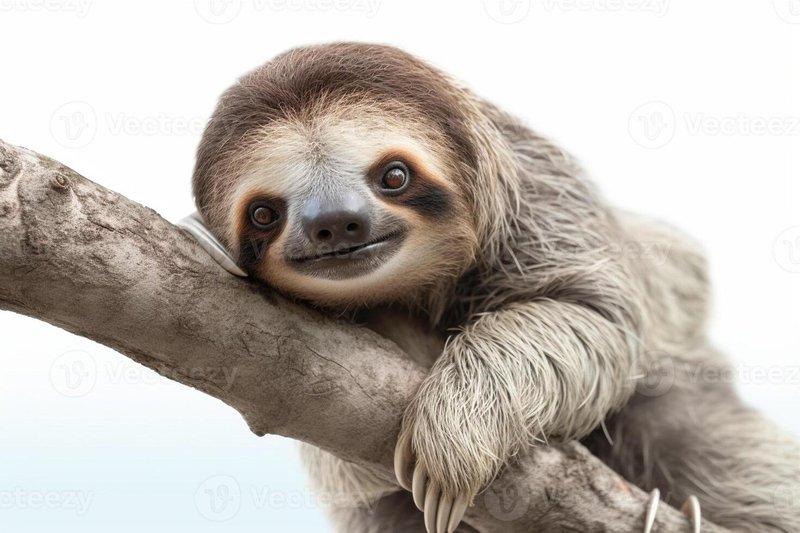
Imagine sipping your coffee and spotting a sloth dangling lazily from a branch, its large, expressive eyes peeking out, almost as if they’re contemplating the meaning of life. The reality is a bit more complex! Two-toed sloths are a unique species with specific adaptations, behaviors, and roles in their ecosystems. Over the next few sections, we’ll dig into some common myths and misconceptions about these creatures, separating fact from fiction while having a little fun along the way.
Myth 1: Sloths Are Incredibly Slow
You might think that sloths are the slowest animals on the planet. I mean, the very name “sloth” suggests laziness, right? While it’s true that they move at a leisurely pace, they aren’t quite as sluggish as you may think. Sloths typically travel at a speed of about 0.24 kilometers per hour (or roughly 0.15 miles per hour). Sure, that’s slow, but it’s not like they’re moving in slow motion all the time!
Here’s the thing: sloths have evolved to conserve energy because of their low-calorie diet. Eating leaves means they need to save every bit of energy they can. So, while they may look like they’re in a constant state of chill, they’re actually experts at energy management. Interestingly, when they feel threatened, sloths can speed up a bit and move faster than you’d expect.
You might be wondering why they seem to take their sweet time. Well, their slow movements help them blend in with their surroundings, and they’re less likely to catch the eye of predators like jaguars or harpy eagles. So, the next time you think about how slow a sloth is, remember that every move is a calculated decision.
Myth 2: Sloths Are Lazy Creatures
The stereotype of sloths as lazy animals gets thrown around a lot, but let’s set the record straight: sloths are far from lazy! They have unique adaptations that allow them to thrive in their forest habitats. For one, they spend most of their time hanging upside down in the trees. This isn’t just a party trick—it helps them conserve energy and stay safe from predators.
While it may look like they’re doing nothing, sloths are actively engaged in their environment. They have a specialized digestive system that processes leaves slowly, which means they spend hours digesting their food. That takes serious commitment! And let’s not forget their role in the ecosystem. By moving from tree to tree, sloths help disperse seeds, contributing to forest health.
Honestly, if you were munching on leaves and taking your time to digest, you’d seem a bit slow too! So, while sloths may not be running marathons, they’re certainly not lazy. They’re simply a different kind of active, living in perfect harmony with their surroundings.
Myth 3: Two-Toed Sloths Have a Simple Diet
Another common misconception is that two-toed sloths have a straightforward diet. Many people think they solely munch on a few leaves and that’s it. In reality, their diet is a bit more varied than that. Two-toed sloths primarily feed on leaves, which can include those from trees like cecropia and hibiscus, but they also enjoy fruits and flowers when available.
What’s fascinating is the way their digestive system works. Sloths have a multi-chambered stomach that ferments the tough plant material, allowing them to extract as many nutrients as possible. This slow digestion process is why they only need to eat a fraction of what other animals do. It might sound easy, but finding the right leaves to eat can be a challenge!
You might even say that sloths are picky eaters! They often seek out specific leaves that are not just nutritious but also help them avoid toxins found in some plants. So, while their diet may seem simple at first glance, there’s a lot more going on beneath the surface.
Myth 4: Sloths are Always Cute and Cuddly
Let’s be real—sloths are adorable, with their big eyes and friendly faces. But calling them “cuddly” might be a bit misleading. These creatures have strong survival instincts, and they’re not always in the mood for a hug! Sloths have sharp claws designed for climbing and hanging, which can make them look cute but can also result in a painful scratch if they feel threatened.
In the wild, sloths are solitary animals, and they don’t typically seek out social interactions. As much as we might want to snuggle up with one, they prefer their alone time. Plus, in captivity, sloths can become stressed if handled too much. So, while a sloth might look like a teddy bear on Instagram, it’s important to remember that they thrive best when left to their own devices.
If you’ve ever seen a video of a sloth hanging out, it’s easy to fall for their charm. But, we should appreciate them from a distance and respect their need for space!
Myth 5: Two-Toed Sloths and Three-Toed Sloths Are the Same
At first glance, two-toed and three-toed sloths may seem similar, but they actually belong to different families and have distinct characteristics. The most noticeable difference? The number of toes! As their names suggest, two-toed sloths have two long toes on their front limbs, while three-toed sloths have three toes. This difference may seem trivial, but it actually reflects their varied lifestyles.
Two-toed sloths are generally larger than their three-toed counterparts. They also have different diets and habitats. While both species are primarily folivores, the types of leaves they prefer can differ. Two-toed sloths often inhabit lower forests compared to three-toed sloths, which tend to stay higher in the canopy.
Let me explain—understanding these differences is essential for appreciating how each type of sloth has adapted to its environment. While they share similarities, each species has a unique place in the ecosystem and plays a role in its health. So, the next time someone mentions sloths, you can impress them with your knowledge about the differences!
Myth 6: Sloths are Endangered and Always Threatened
While it’s true that sloths face challenges in their habitats, the story isn’t all doom and gloom. Many people think all sloth species are endangered, but this isn’t exactly true. The conservation status varies depending on the species. For example, the brown-throated sloth (the most common two-toed sloth) is currently classified as “Least Concern,” meaning they’re not facing immediate threats.
However, it’s essential to recognize that habitat destruction is still a significant concern. Deforestation and climate change pose real challenges to sloth populations, as they rely heavily on their forest homes for survival. Conservation efforts are crucial to ensuring these unique creatures thrive in the future.
Honestly, while it’s encouraging that some sloth species are doing okay, we can’t rest easy. Supporting organizations that work to protect sloths and their habitats is a good way to help out. Every little bit counts!
So, there you have it! We’ve put some common myths and misconceptions about two-toed sloths under the microscope and revealed the truth behind them. These fascinating creatures are way more complex than their laid-back image suggests. They’re not lazy; they’re energy savers. Their diet is rich and varied, and they’re certainly not just cute, cuddly things that you can pick up and hug.
As you think about two-toed sloths, remember the important role they play in our ecosystems and the way they’ve adapted to their lush homes. Next time you see a photo or video of a sloth, you can appreciate the beauty and intricacies of these incredible animals. Let’s keep supporting efforts to protect their habitats so they can continue to thrive for generations to come!

